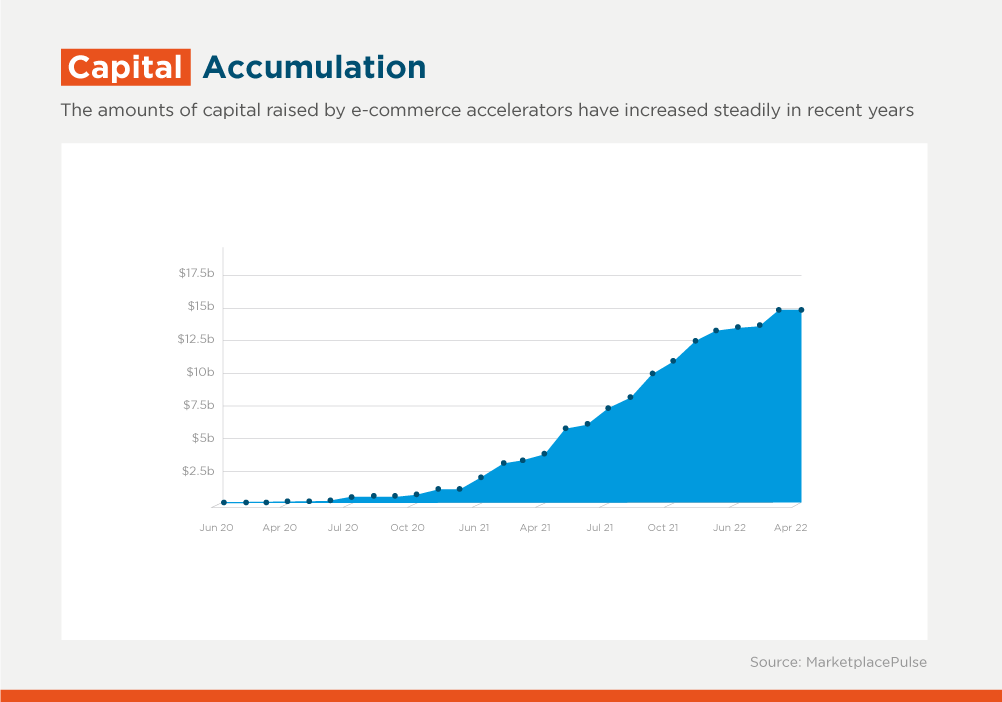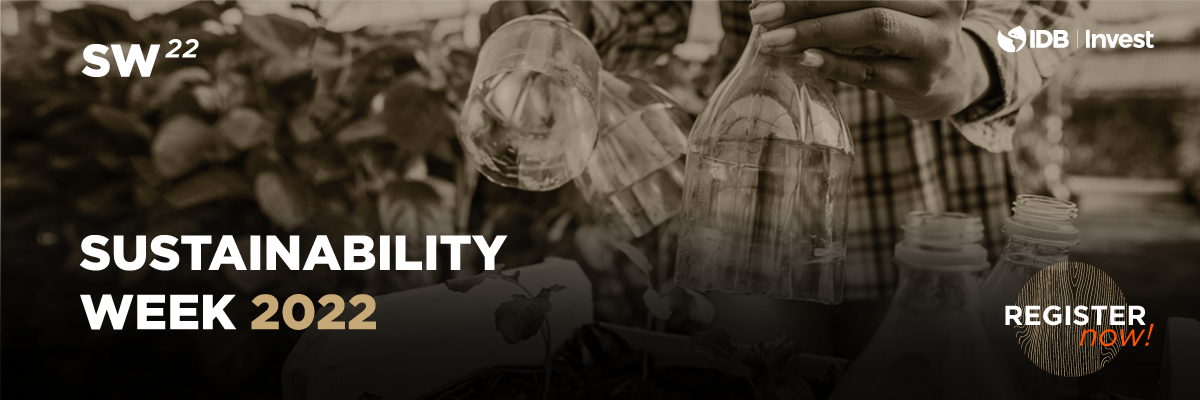The Time Has Come for Sustainable E-Commerce Accelerators

When you fill your Amazon cart, do you know who you are really buying from? In the US, only 1/3 of items are sold by Amazon itself. Most items under the Amazon marketplace are offered by millions of MSMEs under the FBA (Fulfilled by Amazon) modality. With FBA, the ecommerce platform provides the infrastructure (pick, pack and ship) and other tools, such as payments, that make transactions happen smoothly.
Not unlike their brick-and-mortar and mom-and-pop store counterparts, an ecommerce merchant (known as an “eSME”) is under constant stress. eSMEs face a myriad of financial and operational challenges, including supply chain management to avoid stock outs, cash flow and working capital management, or even pursuing more strategic goals, such as kickstarting a regional expansion.
Yet recently, the buying and selling frictions have reduced even further thanks to a new type of player entering this ecosystem. Enter E-commerce Accelerators (also called “aggregators”). Their business model is to acquire, partner or collaborate with promising ecommerce merchants (known as “eSME”) that operate under large global digital marketplaces like Amazon, Ebay, and Etsy and relevant LAC platforms such as Mercado Libre and Linio, among others.
Accelerators benefit from specialization and scale. They boost eSMEs marketing, analytics, supply chain management, while optimizing working capital. In short, they adopt a “tech-first” approach and follow a “Partner, Optimize, Invest and Grow” theses. Accelerators allow for a more consistent use of market intelligence, software and analytics. For example, knowing that a brand has good customer reviews in one country makes it easier for an Accelerator to position that product in other geographies.
Of course, Accelerators would not exist if it were not for the thousands of eSMEs with which they can partner or roll up. Some sources estimate ~1.5 million eSMEs selling in Amazon and Mercado Libre in Latin America and the Caribbean (LAC), with over 100,000 eSMEs selling between $100,000 and $20 million. The total sales of these eSMEs in LAC is estimated in ~$100 billion.
Underlying secular trends are enabling the landscape for Accelerators to flourish. E-commerce is now mainstream. By providing better overall shopping experiences, quick door-step delivery options and greater selection of inventory, e-commerce has reshaped retail marketplaces and entrenched itself into consumer preferences.
The combination of broadband and smartphones have transformed how, when and from where we buy. Other accelerants and enablers such as social media tools and new payment technologies, including buy-now-pay-later financing solutions, have further accelerated the shift from offline to online. And Covid-19 has pushed buyers and sellers to a low touch, digital mode.
LAC is presently the fastest growing e-commerce market in the world (+37% in 2020), with still plenty of room to expand. Statista Market Outlook expects hypergrowth in this market, with a CAGR of 17% between now and 2025, for a total market size of $160 billion. However, LAC still needs to close the gap with developed market. Online retail sales in Latin America represented only 5.6% of total retail sales in 2020 compared to 14.5% in the US.
The e-commerce opportunity in LAC is massive and is at the early innings of continued growth and is one that can help drive sustainably growth. The region continues improving bottlenecks such as logistics and sometimes substandard broadband quality, and this leads to higher efficiencies and easier availability of circular economy models where recycling is king.
In a better world of perfectly matched buyers and sellers with perfectly set market prices, waste tends towards zero. There’s no need to stock up too many products that will have to be thrown away, or too much packaging that will rot in a warehouse. Higher e-commerce penetration translates into deeper inclusion as the needs of diverse customers are met, as well more efficiency and higher productivity, within a sustainable framework. Accelerators are playing and will continue to play a key role to unlock e-commerce’s full impact potential.
It was only in 2018 that the first Accelerator was created. Thrasio became the world’s most rapid unicorn at an estimated valuation of between $5 to $10 billion based on the last equity round in Oct. 2021 and was first mover in the US. It was quickly followed by Perch, Heyday, Branded and Growve. Other international names include Mensa Brands from India, and Heroes in the UK. Operating under the Amazon platform alone, there are reportedly 99 Amazon Accelerators globally which attracted an astonishing $15 billion in capital raised in little over 2 years. An impressive 32 of these have raised at least $100 million as of April 2022!

In LAC there are a handful of promising and fast-growing players, including Merama, Valoreo, Rio Grande, Wonder Brands and Quinio, all of which have captured significant equity commitments from the Venture Capital community, with at least one already being a “unicorn” (Merama) and a few others soon to be. Interestingly, these start-ups have also raised large loan commitments, since the rolled-up eSMEs already generate steady cash-flows. The development finance community is looking closely into this space.
eSMEs still struggle with fundamental problems which create a ceiling to their aspirations. In this sense, Accelerators are highly specialized, more experienced and better funded market participants that can better address operational, logistical, financial and execution challenges. Accelerators help formalize smaller eSMEs that often survive by relying on informal worker and under reporting profits. In summary, the support of Aggregators is accretive towards digitalization, the promotion of SMEs and the efficiency of ecommerce, which translates into higher availability and affordability of products for LAC’s consumers.
LAC is the fastest growing e-commerce region in the world, yet brands are extremely nascent or non-existent. Several multi-billion-dollar brands will be created in LAC over the next years. Clearly Accelerators are key players in next generation e-commerce. And fortunately, LAC is capturing part of the action. So next time you check out your digital shopping cart, just think of everything that’s going on behind the scenes!
This blogpost is published in connection with IDB Invest Sustainability Week 2022, to be held between June 28 and July 1 in the city of Miami. Learn here how to register to participate, either in person or virtually.

LIKE WHAT YOU JUST READ?
Subscribe to our mailing list to stay informed on the latest IDB Invest news, blog posts, upcoming events, and to learn more about specific areas of interest.
Subscribe



